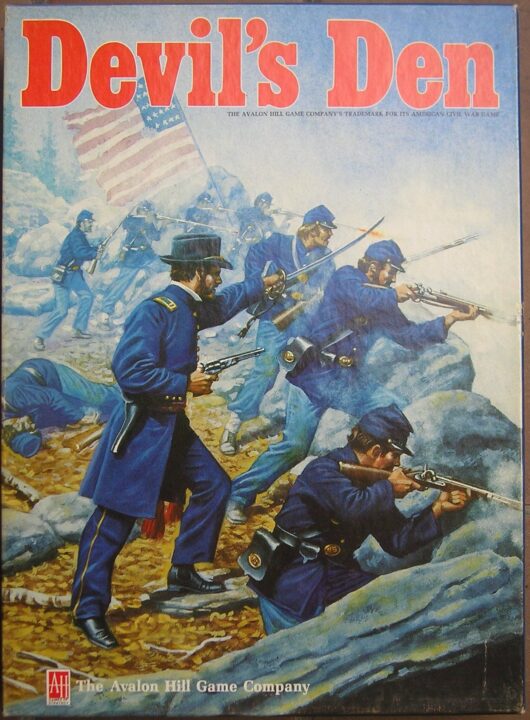If you’ve got a table, a few friends who love scheming, and a taste for games with a pinch of chaos, you’re probably wondering if Devil’s Den is worth your hard-earned snack money. Well, buckle up—this review will tell you if Devil’s Den has what it takes to turn your game night into a legendary battle (or a firestorm of friendly accusations). I’ve played this one with my crew, survived the wild swings and late-night snack raids, and I’m ready to lay it all out—warts, glories, and the occasional head-scratching rule.
How It Plays
Setting up
Each player grabs a character board and places it in front of them. Shuffle the event and action card decks—don’t drop them on the floor like I did. Put the main board in the center, pile on the tokens, then hand out starting resources. The player who last ate something spicy goes first. Seriously, check the rulebook.
Gameplay
On your turn, pick an action: move, play a sneaky card, or trade resources (or threats!) with others. You’ll draw event cards that can help or totally mess up your plans. I once lost my entire stash to a surprise demon attack—my friends are still laughing. Table talk is encouraged, and alliances form and crumble faster than my Jenga towers. Plan ahead, but watch out for those curveballs.
Winning the game
The goal is simple: be the first to hit the victory point total listed for your player count. You get points by surviving, outsmarting your rivals, and collecting certain tokens. But, as I’ve learned, don’t get too cocky—the game loves to humble anyone ahead. When someone hits the target, that’s it. It’s a mad scramble to the finish!
Want to know more? Read our extensive strategy guide for Devil’s Den.
Game Balance and Fairness in Devil’s Den: The Good, The Bad, and the Infuriating
Confession time: I’ve been on both sides of a brutally unfair board game. I once lost a game of Monopoly when my friend landed on Free Parking for the fifth time in a row. Did I flip the board? Maybe. But that’s why Devil’s Den’s game balance matters so much to me. If a game feels like it’s rigged, it might as well be a fancy piece of shelf decoration.
So, how does Devil’s Den do when it comes to fairness? The good news: most of the mechanics keep things tight. There’s a push-pull between players as they fight for control of spooky territory. The turn order rotates, so nobody gets stuck as the perennial first loser. And the card distribution is fair, with enough variety to reward both clever planning and bold risks. Sometimes I felt clever. Other times, apparently, I was just too bold (read: careless) and paid the price.
But here’s where my left eyebrow twitches: there are a few event cards in Devil’s Den that can just ruin your day, and there’s no way to see them coming. Picture me, having clawed my way to a stronghold, and then – BAM – my friend draws the “Demonic Uprising” card. Goodbye, carefully crafted strategy. Hello, table-flipping temptation. These wild swings don’t happen every game, but they can feel cheap. If you’re all about raw skill and zero luck, Devil’s Den may not scratch your itch properly. For me, it’s a 3 out of 5 on the fairness-o-meter.
Next up: Let’s talk about whether you’ll want to play Devil’s Den over and over, or if you’ll just leave it gathering dust while you Google cat videos instead.
Replay Value and Strategy Depth in Devil’s Den
If you want a game that keeps you coming back for more, Devil’s Den does a pretty decent job. I’ve played this thing so much, my friends now groan whenever I bring out the box. I don’t blame them. The game throws a mix of routes you can take every time, so you can’t just rely on the same old tricks. Different setups, possible alliances, and some sneaky player moves mean no two games feel the same. Yesterday, my cousin tried to build a fortress and only spoke in pirate voice. It was a mess, but honestly, his oddball plan made the game extra fun.
As for strategy depth, Devil’s Den won’t fry your brain like chess, but it gives you enough to chew on. There’s a bunch of player choices in every round: do you go full-on attack mode, play it safe, or buddy up with someone just long enough to backstab them? Bluffing works, but you need to watch out for people who “accidentally” knock over their pieces—yes, Gary, I’m talking about you. I’ve found that if you want to win, you can’t just rely on luck. It helps to read people and plan ahead, but it never gets too intense. It’s got that sweet spot where strategy matters, but you don’t need a Ph.D. to play.
Still, if you’re the sort who needs total control and hates surprises, Devil’s Den might make you sweat a little. You have to roll with the punches and think on your feet. All in all, it’s fun, fresh, and keeps things spicy for quite a few plays before you might consider a break.
Hold onto your cosplay horns—the next bit covers Devil’s Den’s component quality and artwork!
Component Quality and Artwork in Devil’s Den: A Feast for the Eyes?
When I ripped the shrink wrap off Devil’s Den, I was hoping for something that wouldn’t have me reaching for the super glue within the first game night. The component quality is honestly solid. The game board itself feels like it could survive an over-caffeinated cousin’s pizza spill (don’t ask). The cardboard tokens are thick enough that my hungry cat can’t chew through them—tested and confirmed, thanks, Mr. Whiskers.
As for the minis, if you’re expecting the quality of hand-painted, boutique pieces, you’ll be disappointed. But, for a game in this price range, the detail is pretty sharp. Each demon looks evil enough to haunt my dreams, and the heroes have just enough personality to avoid getting lost on the board. No squinting required, unless you forgot your glasses (again, looking at you, Paul).
The artwork is what really sets Devil’s Den apart. Dark, moody illustrations make every game feel like you’re about to summon something you shouldn’t. My group actually paused for a minute just to check out the card art—a rare move since we usually argue over who gets the last slice of cheese. The fonts are readable (hurrah!) and there’s a nice balance between cool design and not cluttering the board with extra nonsense. No, you don’t need a magnifying glass or a PhD in graphic design to play Devil’s Den.
In short, Devil’s Den looks and feels like a proper game night contender. But, what’s a good-looking game if no one’s talking, laughing, or plotting revenge? Next, I’ll share if Devil’s Den actually gets people thinking and scheming at the table!
Player Interaction and Engagement in Devil’s Den
If you’ve ever wanted to test the limits of your friendships, Devil’s Den is a fiery pit of banter and backstabbing. Every turn, I found myself holding my cards close (sometimes literally, because my friend Sam is a cheater) and eyeing the table for my next move. The game packs in table talk. You get to plead, bluff and accuse with all your might. Even the quiet players at our game night ended up shouting—mostly at me, but still, everyone got involved.
The thing I really enjoyed about Devil’s Den is that you just can’t tune out and play on autopilot. Every time it’s your go, you have to think about what the other players might ruin for you. Last night, I spent three rounds plotting a sneaky win before Jess swooped in and snatched victory from my claws. Watch out for the surprise twists—sometimes you’ll be flying high, only to end up at the bottom of the heap thanks to a clever move by someone you least expect. It’s that kind of game where you want revenge… in the best way possible.
Devil’s Den shines brightest with a full table. It’s engaging, even when you’re losing. You’ll find yourself invested in every move, either plotting your comeback or wrecking someone else’s day (all in good fun, of course). Our whole group had laughs, groans, and high-fives—even when things got heated, we wanted to play again.
Would I recommend Devil’s Den for game night? Absolutely. If you love a game that gets people talking, scheming, and maybe even plotting against the snack bowl guardian, this one’s got you covered!
Conclusion
That wraps up my wild time with Devil’s Den! I had loads of laughs and enough plotting to worry my friends for life. The game comes with sturdy pieces, moody art, and enough player scheming to keep things spicy every night. While a few event cards make things swingy and luck takes the wheel a bit too often, strategy still pays off if you plan your moves. Fans of player interaction and tense moments will get a real kick out of this one. If you like a good mix of chaos and tactics, Devil’s Den is a wicked choice for your next game night. Just keep an eye on those wild cards—and your so-called friends. Thanks for reading my review! Now go stir up some trouble.


